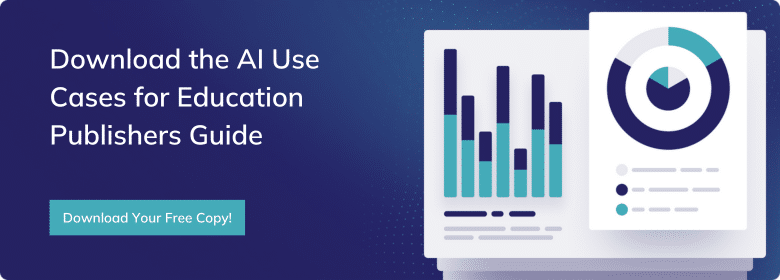The Business Leader’s Guide to Responsible AI Use

The business benefits of implementing artificial intelligence (AI) are clearer now than ever before. More than half of organisations worldwide are seeing greater returns in costs and overall efficiency from using AI in their IT, business, and network processes.1
However, as is always the case with a new way of working, AI isn’t something that should be employed lightly. On top of valid concerns like overreliance on the technology over human efforts or poor implementation, there are also worries around data privacy, compliance, and governed employment of AI.
Today, a major question in the business world is: “How can AI be employed ethically?” Debates around the subject have reached a point where employees at leading companies from Clarifai to Google wonder if it’s even possible.2
But, to clarify: I don’t believe that the only ethical way of addressing AI is to avoid it entirely. On the contrary, not utilising its benefits has the potential of bringing more harm than good to your business in the face of mounting competition, standards of quality, and speed of delivery.
The truth is that it is entirely possible to ethically employ AI in your business. The process just requires ample care and guidance to ensure that you’re not facing:
- Potential legal and regulatory implications
- Losing the trust of your consumers, partners, and stakeholders
- Widespread harm to your technical ecosystem and ways of working
Here, I’ll be outlining the strategies you as a business leader should be taking in the journey to implementing AI responsibly.
Suggested reading: We at Talk Think Do have already seen the benefits of AI in EdTech — read our guide on AI Use Cases for Education Publishers to learn more.

The importance of data security and privacy
The modern-day consumer is more concerned with the security of their data and information than generations prior — and that cautiousness is likely only going to build from here. About a third of younger customers are more likely to request data changes or deletions, and will readily leave a provider if they don’t agree with its policies around data privacy.3
Unfortunately, generative AI gives these consumers a fair enough reason to be worried. While they may have come around to businesses storing sensitive information like their consumption habits to even their personal details, this data potentially being used to teach and train AI models can serve as a step too far. Critically, this is a concern shared by employees as well.4
The step to take here? Simply, be transparent.
The less information you’re giving your customers and your employees on how their data is being stored and treated (even outside of the realms of AI), the more distrusting they’re going to be of your practices. Take steps that prove you’re carefully considering AI best practices by doing the following:
- Invest in a culture of learning around AI: Encourage a culture of learning about AI’s capabilities and limitations, ensuring decisions are informed by the latest developments in AI ethics and legal codes. As should be standard anyway, keep your workforce and buyers regularly informed on any relevant developments you’re taking surrounding AI and link them to clear, in-depth explanations on how they can potentially be impacted.
- Actively work with AI experts: Building on the above — consider bringing in external expertise to guarantee that you’re addressing AI to the correct standards. With AI progressing at the rapid pace it currently is and pressure to address it responsibly, it is worth relying on seasoned experts here. Remember that the good ones will be able to act as partners, consultants, and advisors on all things generative AI — the best ones will aid you in strategies that are customised and easily integrated into your business as it stands.
- Foster an internal AI ethics board: Creating a division that’s invested in the interests of your AI strategies and your HR and customer relationships serves as an added layer of security for all involved parties. In addition to staying on top of developments in the world of AI and keeping your business ahead, it signals to your consumers and employees that you’re putting in ample time and resources to protect their best interests.
Balancing AI and human inputs
A crucial aspect of integrating AI into your business is maintaining a balance between technological input and human judgment. Arguably, the biggest talking point surrounding AI is its ability to “mimic” how people work and communicate. Namely because it has led to an influx of workers worrying that AI will replace them and their jobs.5
With that said, the most effective approach to take with AI isn’t to try to make it replace human decision-making — but to augment it. When integrated correctly, AI can process and analyse data at an unprecedented scale, offering insights that might be beyond human capacity and giving back your teams time and resources that can be dedicated to other complex tasks.
There is a fine line to take here. So consider doing the following:
- Define clear roles for AI and human input: Establish guidelines on where AI’s role ends and human judgement begins. For example, AI can be used for initial data analysis, but final decision-making should rest with your human executives.
- Training for critical evaluation: Ensure your team is equipped to critically evaluate AI-generated insights. This includes understanding the limitations of AI and recognising biases in data or algorithms.
- Host regular reviews: Implement regular review mechanisms where AI decisions are audited by human teams. This not only ensures checks and balances but also helps in refining AI algorithms based on human feedback. Plus, these audits should tie into ensuring that you’re complying with existing data protection and privacy laws, such as GDPR compliance for businesses operating in or dealing with the EU.
Ethical implications and social responsibility
While focusing on the operational aspects of AI, it’s equally important to address its social and ethical implications. AI should be utilised in a way that aligns with the core values of your company and society at large. This involves ensuring fairness, preventing discrimination, and being mindful of the societal impact of AI-driven decisions.
- Diversity in AI development: Involve a diverse group of people in the development and training of AI systems. This helps in mitigating biases and ensuring that AI algorithms are fair and equitable.
- Community engagement: Engage with broader communities, including customers, industry experts, and ethicists to understand their concerns and expectations regarding AI.
- Impact assessments: Conduct regular assessments to understand the social impact of your AI technologies. This includes evaluating how AI decisions affect different groups within society and making adjustments accordingly.

Create AI solutions that work with your business
So far, I’ve covered how best you should address the potential ethical problems that may come with using AI in your business. However, responsible AI use also has a lot to do with whether you’re using solutions that are actively working with your business rather than against it.
Ultimately, every business’ tech stack and team is going to be set up differently, with varying levels of expertise. Rather than relying on standard AI implementation, prioritise solutions that are custom-built to your systems and can be integrated into your existing applications and products.
Remember: augment, not replace!
Embedding AI in a way that enhances the value of your existing systems and offerings would involve the following:
- Assessment and planning: Begin with a thorough assessment of your current technology infrastructure. Identify areas where AI can add value and determine if your existing systems are capable of supporting AI integration. Develop a roadmap that outlines the integration process, keeping scalability in mind.
- Collaboration between teams: AI integration isn’t just a technical challenge; it requires input from those who understand your specific business context and user needs. So foster collaboration between your IT, development, and product teams. Regular cross-functional meetings and workshops can ensure that all teams are aligned on objectives and approaches.
- Modular and agile implementation: Adopt a modular approach to AI integration. This means implementing AI in smaller, manageable components rather than a single, large-scale overhaul. You want to allow for flexibility, easier troubleshooting, and the ability to iterate based on feedback and performance.
- User-centric design: Ensure that AI enhancements are designed with the end-user plus your current development teams in mind. That means understanding your consumer needs, how AI can improve their experiences with your products and services, and ensuring that all of the above is done in line with your internal skill sets. Crucially, if you’re concerned about there being a lack of expertise on AI within your team as it stands, reach out to an external provider for support.
Don’t hesitate to ask for help from the experts
The future of AI in businesses is bright. With 54% of companies already having implemented generative AI in some capacity, there’s no better time for you to do the same and start achieving greater outcomes.6
I hope the above insights have given you enough support to start using AI within your business while safeguarding your teams and customers alike. At Talk Think Do, we’ve been guiding our clients on best practices for employing customised AI solutions within their organisations, prioritising seamless integrations and our expert-led support throughout the entire journey. With our help, businesses have been able to fully experience the benefits of AI with the comfort of knowing that our solutions are created with leading standards and their best interests in mind.
Curious to know more about how we can do the same for your business? Discover how we build our customisable, easily integratable AI solutions here — or, go ahead and book a consultation with one of our experts.
1 IBM Global AI Adoption Index 2022
2 Is Ethical A.I. Even Possible? – The New York Times
3 What Businesses Should Know About Data Privacy And AI — Younger Consumers Lead The Way
4 AI and employee privacy: important considerations for employers | Reuters
Get access to our monthly
roundup of news and insights
You can unsubscribe from these communications at any time. For more information on how to unsubscribe, our privacy practices, and how we are committed to protecting and respecting your privacy, please review our Privacy Policy.
See our Latest Insights
Customising Microsoft Copilot: Exploring Options for Tailored AI Assistance
If you’ve been following AI developments in 2024, Microsoft Copilot is a tool you’re likely already familiar with. Aimed at improving workplace productivity, streamlining decision-making, and optimising business processes, Copilot is being used by tens of thousands of people at an impressive 40% of Fortune 100 companies.1 While it’s still too early to tell what…
Evaluating AI Tools Using a Task-Based Framework to Optimise Productivity
We’ve all heard about how AI can improve productivity, boost work quality, and open doors to new business opportunities. But the reality is that these kinds of successful results rely on considerable preparation and careful implementation. According to recent surveys, 63% of respondents in successful businesses say that the implementation of generative AI is a…
Comparing AI Integration Approaches: Microsoft Copilot, Custom AI Solutions, and Copilot Customisation
Business leaders in 2024 are being urged from all sides to implement AI. Not only is AI an effective assistive tool, with 92% of those who regularly use it saying it makes their workload more manageable, but it can also be used to facilitate wider digital transformation and innovation.1 So how can you integrate AI…
Legacy systems are costing your business growth.
Get your free guide to adopting cloud software to drive business growth.




